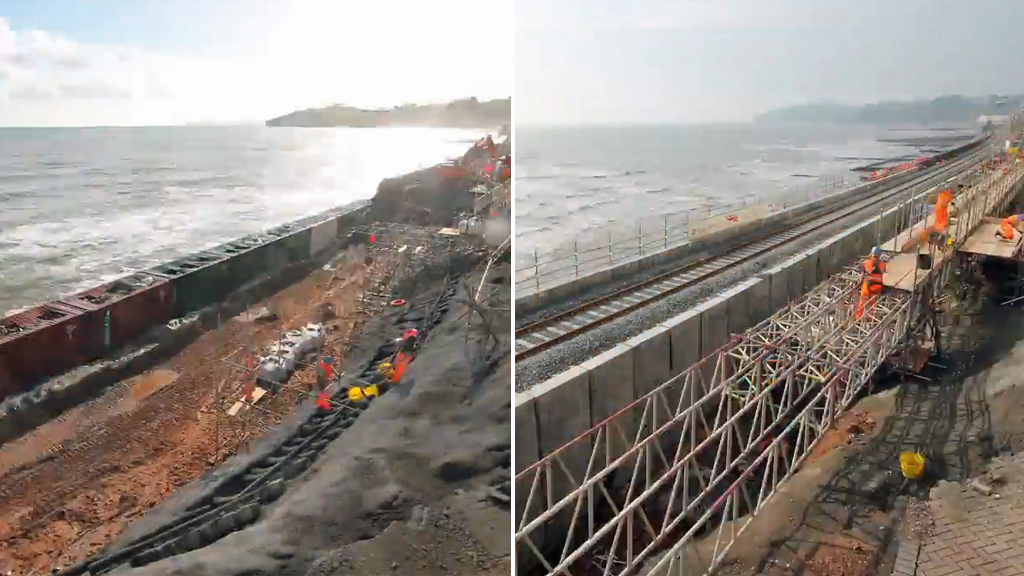Dawlish coastal rail link reopens two months after storms
The broken Dawlish rail link, which became one of the defining images of the storms and flooding that hit parts of southern Britain in February, reopens in time for the Easter holidays.

A 300-strong team of Network Rail engineers has worked for over two months to re-establish the railway, a part of which was destroyed after storms forced the collapse of the sea wall.
Rail services to the south west of England were severely disrupted as a result.
Temporary sea wall
The reconstruction project involved building a temporary sea wall to protect engineers as they worked, removing 25,000 tonnes of collapsed cliff in Teignmouth following a landslip, the rebuilding of half of Dawlish station, and installation of over 13 miles of new cables.
Prime Minister David Cameron said: “This is a great day for the hard-working people of Dawlish, and for businesses and commuters across the south west whose lives have been turned upside down by the devastating loss of their train line.”
Looking ahead, Mark Carne, Network Rail’s chief executive, said: “Our focus now moves to the medium and long term, looking at what can be done at Dawlish to make the current coastal route more resilient and, by the autumn, understand what the best viable relief route might be.”
‘In complete denial’
On 10 February, when the storms and flooding were at their peak, Channel 4 News reported that TravelWatch South West, a rail passenger body, had ignored the potential problems caused by the vulnerability of the sea wall at Dawlish.
Professor Frank Chambers, chairman of TravelWatch SouthWest, said Network Rail “has for long been in complete denial about the vulnerability of the Dawlish sea wall to severe storm damage.
“Until last week, it thought it could engineer its way out of the threat. Nature knows better, and has given Network Rail a very stark and salutary lesson.”
Below: time-lapse video of the Dawlish reconstruction, 10 February to 1 April